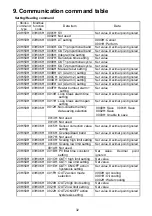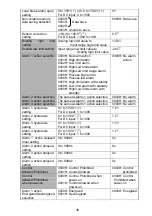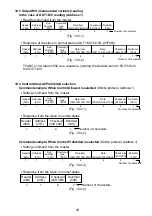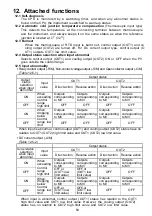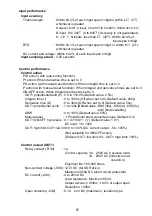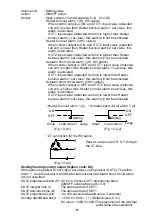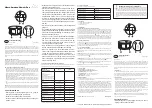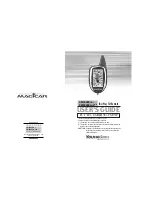
46
11. Control action explanation
11.1 P, I, D and ARW
(1) Proportional band (P)
Proportional action is the action which the control output varies in proportion to the
deviation between the setting value and the processing temperature.
If the proportional band is narrowed, even if the output changes by a slight variation
of the processing temperature, better control results can be obtained as the offset
decreases.
However, if the proportional band is narrowed too much, even slight disturbances
may cause variation in the processing temperature, control action changes to
ON/OFF action and the so-called hunting phenomenon occurs.
Therefore, when the processing temperature comes to the balanced position near
the setting value and a constant temperature is maintained, the most suitable value
is selected by gradually narrowing the proportional band while observing the control
results.
(2) Integral time (I)
Integral action is used to eliminate offset. When the integral time is shortened, the
returning speed to the setting point is accelerated. However, the cycle of oscillation
is also accelerated and the control becomes unstable.
(3) Derivative time (D)
Derivative action is used to restore the change in the processing temperature
according to the rate of change. It reduces the amplitude of overshoot and undershoot
width.
If the derivative time is shortened, restoring value becomes small, and if the derivative
time is extended, an excessive returning phenomenon may occur and the control
system may oscillate.
(4) Anti-reset windup (ARW)
ARW (Anti-reset windup) prevents overshoot caused by the integral action. The smaller
the ARW value, the less the overshoot caused by the integral action in the transition
status, however it takes time until stabilization.
When setting ARW manually, set it to the closest MV (manipulated variable) when the
control is stabilized.
If MV is not determined, perform trial run at default value (50%)
P, I, D and ARW values are automatically set if auto-tuning is performed.

